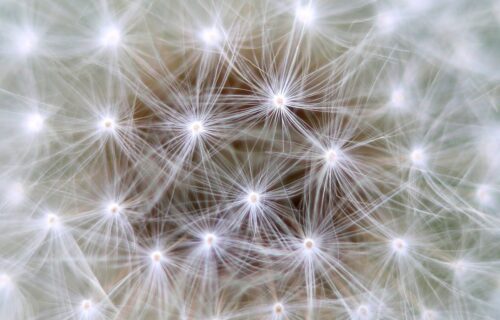
Our internal seasons
Each moment of the year has its gift
For the past 9 years, I have been living in Singapore, only about 100 kilometers north of the Equator.
I like the sunshine, the warm weather, being surrounded by the lush nature and doing my entire physical workout outdoors.
But sometimes, I feel like something is missing. I miss the changing seasons of the northern hemisphere. Though they may not have always reflected the events of my life, they served as important signposts throughout the year.
Such seasonal changes are commonly celebrated all around the world, in spite of us no longer relying on good harvest and husbandry for survival. These festivals symbolize how our lives are still connected to nature and the movement of celestial bodies.
Easter for example is celebrated in different parts of the world as a religious holiday, though for many the meaning has changed to having fun and eating well. It has existed for hundreds of years, and it symbolizes rebirth and starting anew.
In India, the Holi festival celebrates the arrival of spring with bright colors, but is also used to bring people together in joyous renewal, often even in forgiveness.
In many other cultures, we mark the first days of spring and autumn, when the sun passes from one side of the equator to the other. We count down to the shortest day of the year and await the longest during the winter and summer solstices. Our cultures and languages are full of expressions connected to and inspired by the changing seasons.
Our lives constantly change.
We transition with the planet’s cycles; we follow rhythms, an ebb and flow, the phases of the moon, the changing of the seasons. Rhythms pulsate through our lives at many different levels. Our energies and bodies pulsate with our own unique circadian rhythms as the year does through its different seasons.
These seasons are not just external, but also internal. They are reflected through our changing thoughts and perspectives, each season having it’s own beauty and purpose.
Spring is the season of birth, hope, and possibility. It is the season of renewal, the sunrise after dark. After months of waiting and preparation, the energy we saved bursts forth, and we are ready to explore new possibilities once again.
Summer is abundance, power, passion, and creativity. The days are long and languid, but its consistent warmth gives you the opportunity to freely express yourself.
Autumn is the season of harvest. We reap the benefits of everything we have worked on throughout the year, and we count our blessings. It is a time where can survey what we have, appreciate it, and become aware of the results of our effort.
Finally, winter is often portrayed as the barren season, or the season of death. Though in the physical sense this may be true, looking at it as a time of incubation is more accurate. We keep only what is essential, granting us an invaluable sense of clarity as we prepare for what has yet to come. Without winter, there can be no spring.
Although we have attributed these qualities to the four seasons, it does not necessarily mean that our internal seasons follow this external rhythm. When we recognize these phases and are willing to experience and even welcome each of them for what they are, we become more at ease with the changing of our own internal seasons.
As external seasons change and transition, so do our internal seasons.
We tend to want to live in a constant summer; this is usually true whether it is in regards to the weather, or our internal lives. We often feel unsettled and disappointed when fall and winter come, dreading the cold and the dark. Yet our internal seasons still have their own cycle and we cannot rush the internal seasons, just as we cannot rush nature’s.
There is no button we can push to make a bud blossom into a flower. Instead, we must trust the winter that spring is coming again. We must honor the phases of harvest and incubation, as there is no rebirth without them. They are a necessary component in figuring out what is important, what to keep and what to let go.
If we resist this natural cycle, we create struggle within ourselves. But if we give ourselves to its rhythm, we can gain a better understanding of our needs within each distinct element.
Each season is an opportunity.
It is important to actively live these changes, not just endure them. When the focus is on endurance, we are giving up precious opportunities to see past the difficulty of complex situations.
If we are successful in living each season for what it is, we can use them to our advantage.
When you feel powerful and creative, how can you harness that energy and propel yourself forward?
When your personal winter comes, how can you connect with what is most essential to you? What seed will you incubate during this phase?
When things seem difficult, how can we listen to the message? What is being brought to our attention?
Each season highlights a different part of the whole— all are needed to form the full picture.
May we flow with the changing of the external and internal seasons with awareness and acceptance.



